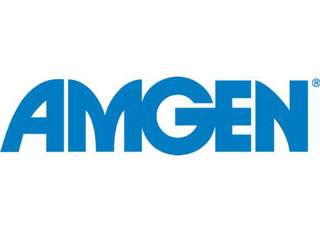 Amgen announced results from the head-to-head Phase 3 study comparing AMG 416 with cinacalcet for the treatment of secondary hyperparathyroidism (SHPT) in patients with chronic kidney disease (CKD) receiving hemodialysis. The study met the primary endpoint of non-inferiority of AMG 416 compared to cinacalcet, measured as the achievement of a greater than 30 percent reduction from baseline in mean pre-dialysis serum intact parathyroid hormone (PTH) levels during the Efficacy Assessment Phase (EAP), defined as the period between weeks 20 and 27.
Amgen announced results from the head-to-head Phase 3 study comparing AMG 416 with cinacalcet for the treatment of secondary hyperparathyroidism (SHPT) in patients with chronic kidney disease (CKD) receiving hemodialysis. The study met the primary endpoint of non-inferiority of AMG 416 compared to cinacalcet, measured as the achievement of a greater than 30 percent reduction from baseline in mean pre-dialysis serum intact parathyroid hormone (PTH) levels during the Efficacy Assessment Phase (EAP), defined as the period between weeks 20 and 27. Further, AMG 416 was statistically significantly superior to cinacalcet in the secondary endpoints of the proportion of patients achieving greater than 50 percent (52.4 percent versus 40.2 percent) and greater than 30 percent (68.2 percent versus 57.7 percent) PTH reduction from baseline during the EAP. There was no difference between the treatment arms in the mean number of days of vomiting or nausea per week in the first eight weeks, another secondary endpoint.
“These findings, combined with results from two positive placebo-controlled studies of more than 1,000 patients, add to the growing body of evidence that reinforce the promise of AMG 416 for hemodialysis patients with secondary hyperparathyroidism,” said Sean E. Harper, M.D., executive vice president of Research and Development at Amgen. “The management of this disease in patients with chronic kidney disease is a complex process, and at Amgen, we are committed to building upon our leadership in nephrology to provide patients with an innovative therapy that can be administered intravenously along with hemodialysis.”
Treatment-emergent adverse events (TEAEs) were reported in 92.9 and 90.0 percent of patients who received AMG 416 and cinacalcet, respectively. TEAEs that were reported in greater than 10 percent of patients in either arm included (AMG 416 versus cinacalcet, respectively): blood calcium decreased (68.9 and 59.8 percent), nausea (18.3 and 22.6 percent), vomiting (13.3 and 13.8 percent) and diarrhea (6.2 and 10.3 percent). TEAEs of hypocalcemia (symptomatic) were reported in 5.0 percent of patients who received AMG 416 versus 2.3 percent in the cinacalcet group. Treatment-emergent events related to cardiac failure were reported in 3.0 percent of patients who received AMG 416 versus 0.6 percent in the cinacalcet group. Serious adverse events were reported in 25.1 and 27.3 percent of patients who received AMG 416 and cinacalcet, respectively. Fatal adverse events were reported in 2.7 percent for the AMG 416 arm and 1.8 percent for the cinacalcet arm.
Study Design
This was a randomized, active-controlled, double-blind, double-dummy study (study number 20120360) over 26 weeks that compared the efficacy and safety of AMG 416 with cinacalcet for the treatment of SHPT in 683 patients with CKD receiving hemodialysis.
Patients randomized to treatment with AMG 416 received intravenous (IV) doses of AMG 416 three times per week at the end of each dialysis session and daily oral doses of placebo tablets. Subjects randomized to treatment with cinacalcet received daily oral doses of cinacalcet tablets and IV doses of placebo three times per week at the end of each dialysis session. Patients also received standard of care, which could include calcium supplements, vitamin D sterols and phosphate binders, if prescribed by the individual physician.
The primary endpoint was the proportion of patients with greater than 30 percent reduction from baseline in PTH levels during weeks 20 and 27, with the objective of demonstrating non-inferiority of AMG 416 to cinacalcet.
Key and other secondary endpoints included the achievement of a greater than 50 percent reduction from baseline in mean pre-dialysis serum intact PTH during the EAP, achievement of a greater than 30 percent reduction from baseline in mean pre-dialysis serum intact PTH during the EAP, and the mean number of days of vomiting or nausea per week in the first eight weeks. Nausea or vomiting were collected by the Nausea/Vomiting Symptom Assessment (NVSA) patient assessment daily questionnaires.
Source: Amgen
Filed Under: Drug Discovery



